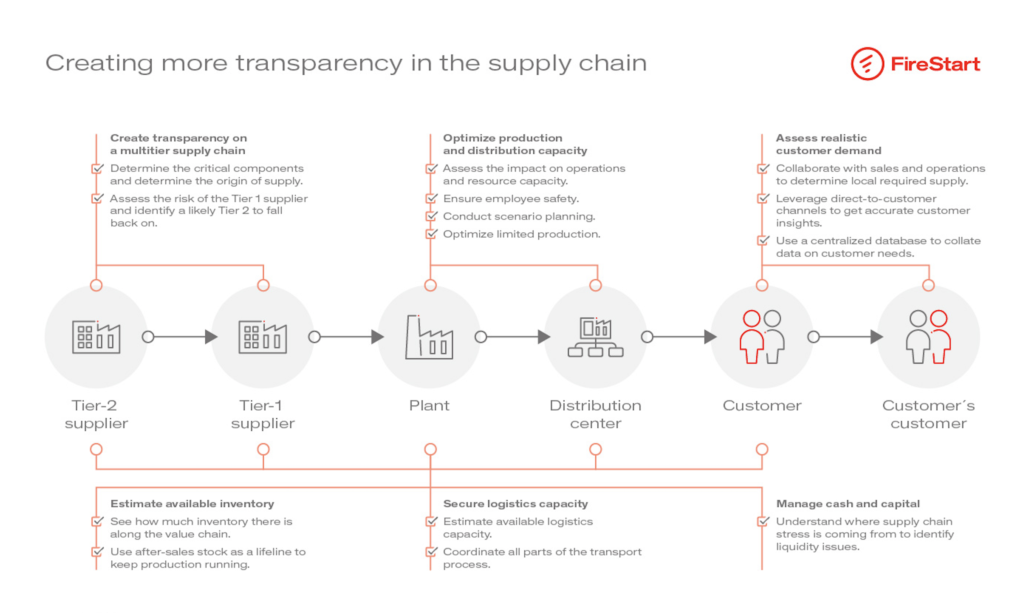
According to Bloomberg Business, the world economy is running low on everything in the world supply chain. From Europe to the US, companies are struggling to find enough capacity. In the early stages of the pandemic, all types of manufacturers from mattress makers to car manufacturers were snapping up stock to ensure they wouldn’t run out.
The pandemic hit the global supply chain hard
These were the beginning stages of the pandemic, almost 2 years ago now. These types of company consumerist habits created a vicious cycle: an insatiable desire to consume, fear of running out, then rinse and repeat. It’s the economic equivalent of stockpiling toilet paper. Now we’re left with a monster of our own creation. Companies’ need to quell their fears has led to shortages of basic building blocks globally.
Bloomberg states, “Copper, iron ore and steel. Corn, coffee, wheat, and soybeans. Lumber, semiconductors, plastic, and cardboard for packaging.” These are just some of the items that are running low. According to experts, there’s also no clear end in sight. So, what is a company to do? In these volatile times, what can manufacturers globally do to help subdue the negative commercial effects of Covid-19?
The manufacturing industry needs a nuanced approach
Enter, automation. As soon as depleting stock levels got the attention of big industry players, they began looking for solutions. And where else to find a solution than in the past? Experts began to cite previous economic difficulties and the remedies that quelled those volatile situations. Toyota has been hailed in the past for its lean model, and now experts look back again to the Japanese manufacturer for what to do in troubling times.
Now, the situation is more nuanced. It’s not simply about more stock equals faster turnaround and more orders fulfilled. Companies had to realize in the global pandemic that this short-term strategy doesn’t work if there’s limited stock available.
McKinsey cited a few key points that manufacturing businesses should consider in a global pandemic:
- Transparency in the supply chain, including the origin of supply, and alternative sources.
- Estimated available inventory, especially considering using spare parts and after-sales stock as a bridge to keep production running.
- Accurate assessment of customer demand, and respond to the customer’s primal purchasing-frenzy fear.
- Optimize production and distribution capacity, taking into consideration new pandemic laws designed to keep workers safe.
- Identify and secure logistics capacity, including new, flexible transportation avenues.
- Manage cash and net working capital, to understand where supply-chain issues will start to cause a financial impact.
Automation can help build supply chain resiliency
What you might not realize is that process automation within a sustainable process ecosystem can help with each and every one of these points. Automation isn’t just RPA software robots sending an email for you, automation can also be an entire complex workflow running on its own – helping companies manage real issues they face today.
Manufacturers now need to predict what inventory they have and anticipate the cascading effect of their actions, and the actions coming externally from the pandemic itself. That is near impossible to do if you don’t have a clear overview of your supply chain from all sides. Process automation can be the saving grace that helps companies identify how they’re going to get all the stock they need to produce the products that customers need most.

Take transparency, for example. Clarity of your supply chain, including data like the origin of supply and other alternative sources in case that primary source runs dry, is what automation can do. A robust iBPMS platform (standing for Intelligent Business Management Suite) integrates automation and process governance so you can do things like instantly generate and send Bills of Materials (BOMs) and catalog components to identify the ones that are sourced from high-risk areas and lack available substitutes.
Then, businesses can easily identify where to get their products, engage with vendors via automated emails, and process shipment invoices to help manage cash flow. This whole process, end-to-end, is encapsulated within one system, integrating third-party applications like SAP and Microsoft 365. Having everything centralized and trackable helps businesses to manage their resources, and helps manufacturers keep up with demand. On both sides, iBPMS and automation help negate the negative “bullwhip” effect and mitigate cascading disasters.
Automation will help manufacturers now and after the pandemic
Being able to anticipate realistic demand from customers, source materials quickly, and keep up with invoices and other tedious slips of paper is going to be essential not only now, but in the future. With no clear end in sight for pandemic shortages, companies need to reinvent the way they approach and manage the global supply chain. It’s a world where automation software can help manufacturers and their clients alike gain invaluable insights into the supply chain, address mounting issues like which products to phase out, and how to plan with available capacity.
Digital supply chain management “improves the speed, accuracy, and flexibility of supply-risk management,” according to McKinsey. Building and reinforcing a single source of truth greatly mitigate the risk that comes from growing product complexity. Automation has become an essential part of the new model for a resilient supply chain of the future.




